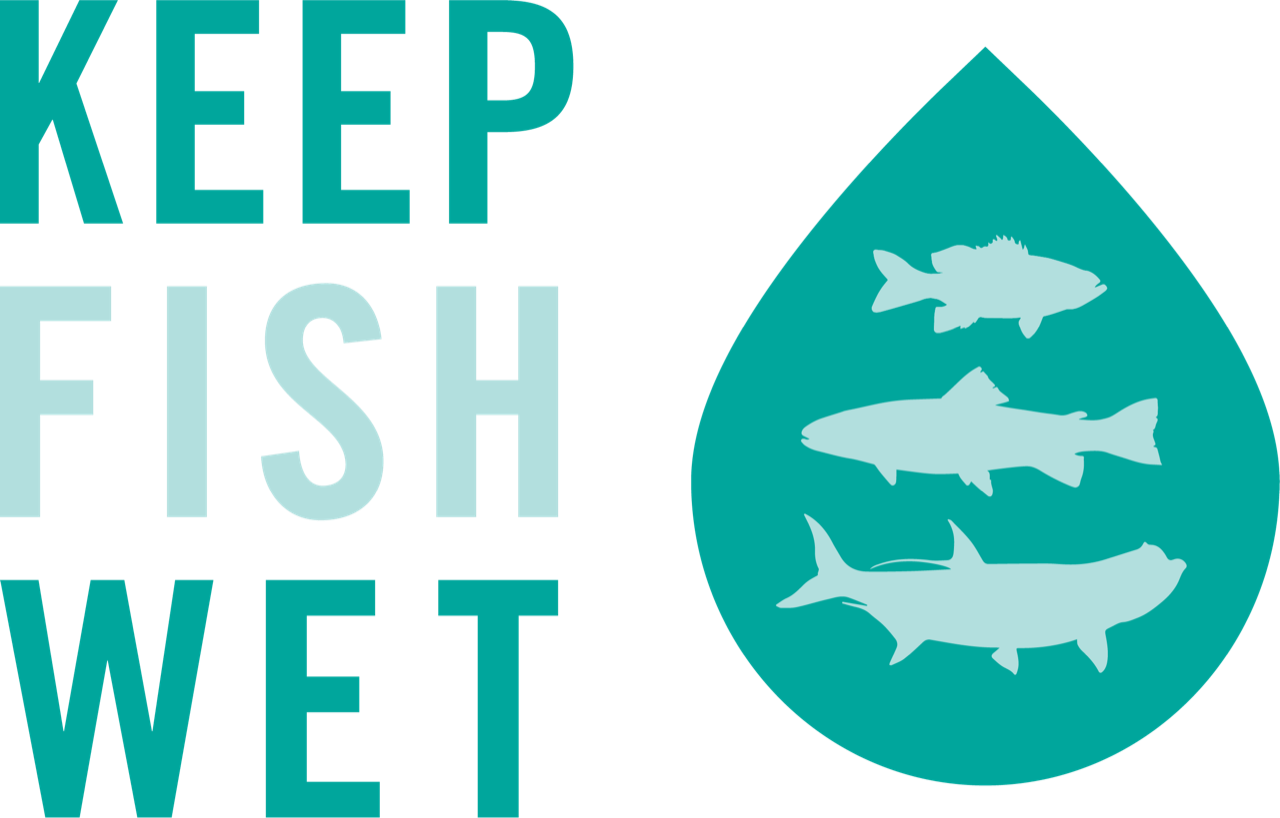What #keepemwet means to me.
by David Lisi
It’s what you do when nobody’s looking. This used to be the standard to live by, but what you do when everyone is looking that matters in today’s world. Our posts on social media say a lot about the kind of anglers we are or better yet, want to be. With the boom of fly fishing on social media platforms, proper fish handling is trending, but is it all just for the photos?
The #keepemwet movement to me is more than just keeping fish wet for sexy pics. It is about adopting a fish handling practice that is fish and resource-centric which starts long before we trek to our favorite waterways.
#Keepemwet begins with conscious choices about how you to pursue, catch, land and release fish. For me, this change in thinking has evolved over many years on the water and is an ever-evolving process. It has led me to fishing by my own set of “laws” or “self-regulation.” I believe #keepemwet is about adopting a personal set of standards that goes above the baseline regulations that guide our fishing journeys and angling practices.
I can remember crude beginnings on salmon and steelhead streams in the Great Lakes, carelessly dragging salmon ashore to later harvest or toss them back in the water. This was how everyone was fishing, I can honestly say that I didn’t know any better. The put-and-take stocking programs of the world tend to make anglers less aware of the fragility of wild and native fish.
It was not until I learned about the wild salmon, steelhead and trout of the pacific northwest that I became enamored by fish and their remarkable life cycles. The life cycles of salmon and steelhead are nothing short of a miracle. Whether potamodromous or anadromous, salmon and steelhead endure a life of seemingly impossible hardships.
Once I learned more about special fish like the wild salmon, steelhead and trout of the PNW, I wanted to pursue them with passion but protect them in the process. This led to a love for all fish species which has developed into my personal set of “standards” and fishing practices.
My passion for fishing led me to Alaska to pursue a career as a fishing guide. Since moving here and guiding these waterways, I have come to know anglers from all walks of life and all corners of the globe. The one thing we all have in common is a willingness to be open to understanding the resource and protect it.
Each angler goes about this in their own way. Movements like #keepemwet, #trybarblessforaday and so on, help raise awareness in our community that there is a higher standard to achieve. Not a better way to look cool while taking fishing photos, but a better way to pursue fish. To me, standard fishing regulations are merely the baseline for this pursuit.
For example, in the waters I guide in Alaska, an angler can conceivably use barbed hooks, treble hooks, harvest trout, fish for trout with bait and take most fish out of the water and so on. Though my individual choices go beyond the standards set forth by the laws, I understand that change happens slowly and open-minded anglers will gravitate to better fish handling practices.
The one thing I would caution is our approach to other anglers. The challenge is to educate without bashing fellow anglers or thinking you’re better than someone else because of the way you do things.
Though most of my fish are kept in the water and handled with the highest level of care I can manage, I still have photographic evidence of a “former angling life." I can be seen holding fish by the gills, laying them on the beach and so on. There isn’t an angler in the world that has a perfect fish handling track record.
I constantly see people bashing anglers online for poor handling techniques and picking apart their methods for pursuing fish with various different rod choices and tackle…. My plea is that we engage our fellow anglers with patience and lead by example, while at the same time realize that we have not matured into the anglers that we someday will become.
Yes, every fish out of water and every dry fish precariously posed for a glamour shot has me shaking my head in utter disbelief, but what puts me at ease is understanding that the growth and evolution of anglers is a personal journey. #keepemwet simply helps anglers find their path to becoming the best stewards for the resource and ambassadors for all species of fish.
David Lisi is the owner of Cooper Landing Fishing Guide, LLC based in Cooper Landing, AK where he makes his year-round home. He is a professional fly fishing guide and outfitter on both the Kenai and Kasilof Rivers on the Kenai Peninsula. David has a passion for teaching various fly fishing techniques and particularly enjoys spey casting. He spends upwards of 250-300 days a year guiding and swinging for salmon and trout on many of Alaska’s famed rivers. David is passionate about the #keepemwet movement and is excited for the future of fishing and stewardship of our resources.









